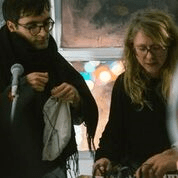
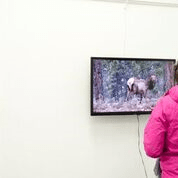
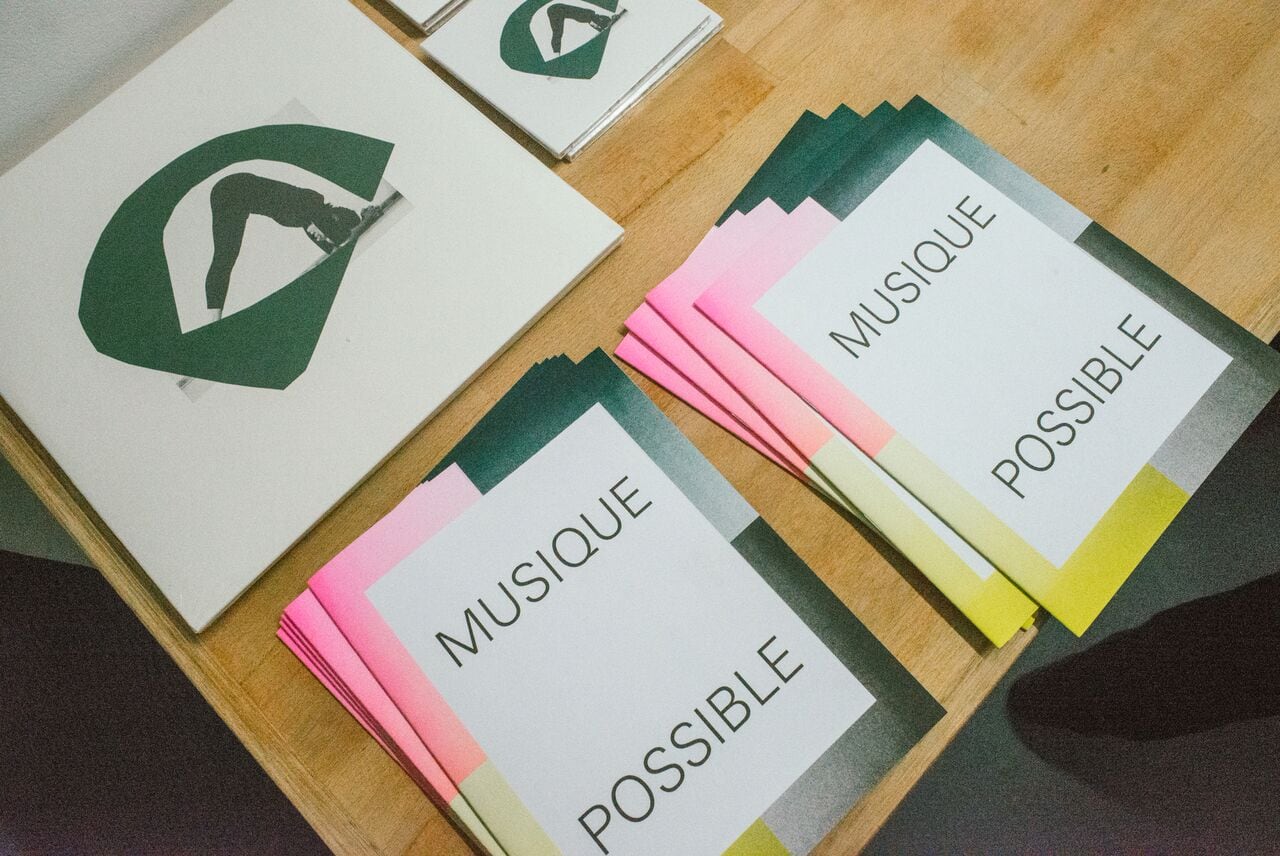
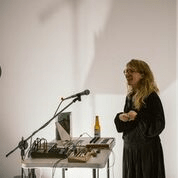
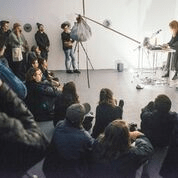
Félicia Atkinson is a visual artist, an experimental musician and the co-publisher of the independent imprint Shelter Press and curatorial platform Argument with Bartolomé Sanson. Her works explores improvisation, fiction, instant composition, noise, abstraction and poetry.
Born 1981 in Paris, Félicia graduated with Honors from l’Ecole Nationale Supérieure des Beaux-Arts de Paris. Her paintings, drawings, sculpture, texts, installations, performances, and musical compositions are mostly abstract, fed by multiple expeditions to places such as Rio de Janeiro, Brittany and the American West, where she collects sounds, objects, and other diverse materials to use in her visual and sound works.
Félicia visited Australia earlier this year where she performed her latest album Hand in Hand (Shelter Press 2017) around the country, undertook residencies at Bundannon Trust and at the Warawatha forest, presented an exhibition at BLINDSIDE, and gave talks and workshops. Here she chats with writer and un Projects intern Pauline Rotsaert.
Pauline Rotsaert: What is the role of improvisation in your approach?
Félicia Atkinson: It is often the engine of my work. It is a way of reacting to the world, to take with it the unforeseen. This does not mean that everything is equal to everything, quite the contrary, but rather that things, actions are mobile. I can think of a sculpture that will end in song, and vice versa.
I tried to explain this in my book Improvising Sculpture as Delayed Fictions (Shelter Press, 2014), which is a work of fiction interspersed with images of my plays, photographs taken on trips, etc. These images begin to dialogue with the characters in the text.
I also like the idea of conversation or drift as a working method. We start from a point, we meet surprises, clashes, accidents along the way, and we react in form.
PR: How do you create your music? Does the composition come with your drawings?
FA: I work in several ways. First, I collect: field recordings, texts, melodies. That takes time. Then I try to start thinking about a question, a concept, an environment that will serve as a frame for composition.
For example, for my last album, Hand in Hand, I was inspired by texts by Philip K. Dick and Ballard, and green plant interview manuals, and old magazines on the Californian desert. It put me in a mood that was a little post-modern and out-dated at the same time, a little desertified. It inspired these very dry melodies,bare musical beaches, a bit alien, martian-like.
PR: Do you have a creative order, a process, with respect to music, text, and installation?
FA: In general, I start with writing and drawing. It is the sketches that lead to the rest. Then I respond to the different contexts, and do it in form.
PR: Your compositions often arise after a certain time in ‘exile’, cut off from the urban world or the whole world (I’m thinking of your house in Brittany, the Alps, and of course the residences you’ve undertaken in Canada and Australia). Do you feel this need for retreat to create?
FA: Different scenery is fertile for my work because it allows me to look at things differently.
The experience of editing when we lived in the Alps for two years made me understand the high dimension of things, their possible radical change from one season to another.
The desert in Arizona also moved me, the infinite side of the plateaus.
Living in a mid-sized city that is not Paris also makes it possible to relativize the world of art, to concentrate on producing and creating rather than the sociable part of things. ”Anyway, I will not be able to go to all the vernissages”!
Being isolated also sometimes makes it possible to be less accessible, and therefore to work more intensely. Logistics takes a long time when you have neither an agent nor a gallery, like me, and sometimes a day can be nibbled entirely away by answering emails, booking train tickets, issuing invoices, etc. The distance, being unreachable, allows me to redefine, or rearticulate, personal space, which is what is missing when I’m on tour, doing business. Of course, it's double edged. On one side one is the distance, the creativity borne in the middle of the beautiful landscapes, and on the other, sometimes, one would like to be at home, surrounded by familiarity.
PR: What is the influence of French and foreign literature on your texts?
FA: Literature defines a mental space, which is beyond the visual, and I am very interested in it. I like to imagine species of hors-champs in my exhibitions.
PR: How do you balance your own artistic work and your role with Shelter Press? Do you delineate each one? I’m thinking of this trip to Australia, where Bartolomé and yourself have been together throughout.
FA: In reality, Shelter Press is 90% Bartolomé and 10% me.
In the past two years, I have not spent more than a whole week in Rennes, so our life is naturally linked to travels and cooperative projects. I wouldn’t be able to do all of these things without Bartolomé.
We produced two books here in Australia, Ambient Park, printed in Indigo, and co-edited with Perimeter Books and the Music Possible fanzine, a rizograph with Liquid Architecture of which I am very proud.
PR: How has Shelter Press been received here in Australia?
FA: People seem very interested, it's encouraging.
PR: How did you come to meet with Liquid Architecture and the Australian-based French curator Anabelle Lacroix? How did this trip come about?
FA: I would have to ask Anabelle, but I think she discovered my work through one of my books, Improvising Sculpture as Delayed Fictions, at the Institute of Modern Art bookstore in Brisbane. Then we had various exchanges by mail, she came to meet Bartolomé and I in Rennes and we imagined the project together.
PR: How do you imagine this trip to Australia will influence you, both creatively and personally?
FA: I don’t know yet!
Things take a long time to infuse; it's something I'll know later. For the moment, I’ll be concentrating on the work that is already underway - the next concerts, the next discussions. It is already a lot!
I loved recording at the MESS studios in Melbourne. I discovered two modular synths: the Putney and the Transaudio. I also tried the Martenot waves and Jupiter keyboard. It was very inspiring.
I was also very marked by the birdsong in Australia, and the warm reception at each concert and event I was involved with.
Pauline Rotsaert is an Australian-based French emerging arts writer and un Projects intern.
